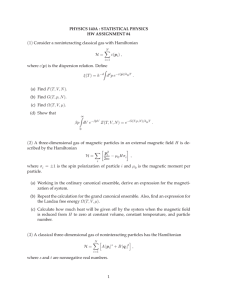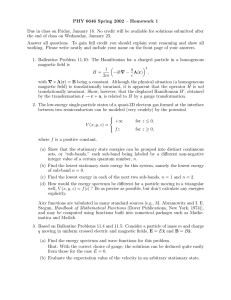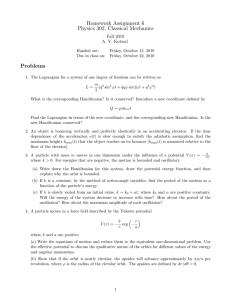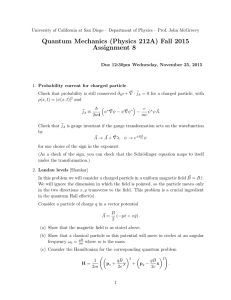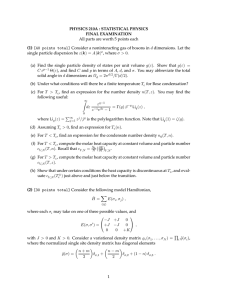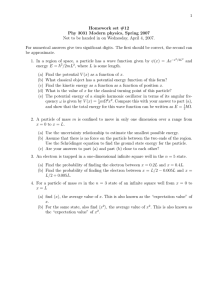Quantum Mechanics C (Physics 212A) Fall 2015 Worksheet 8 Announcements
advertisement
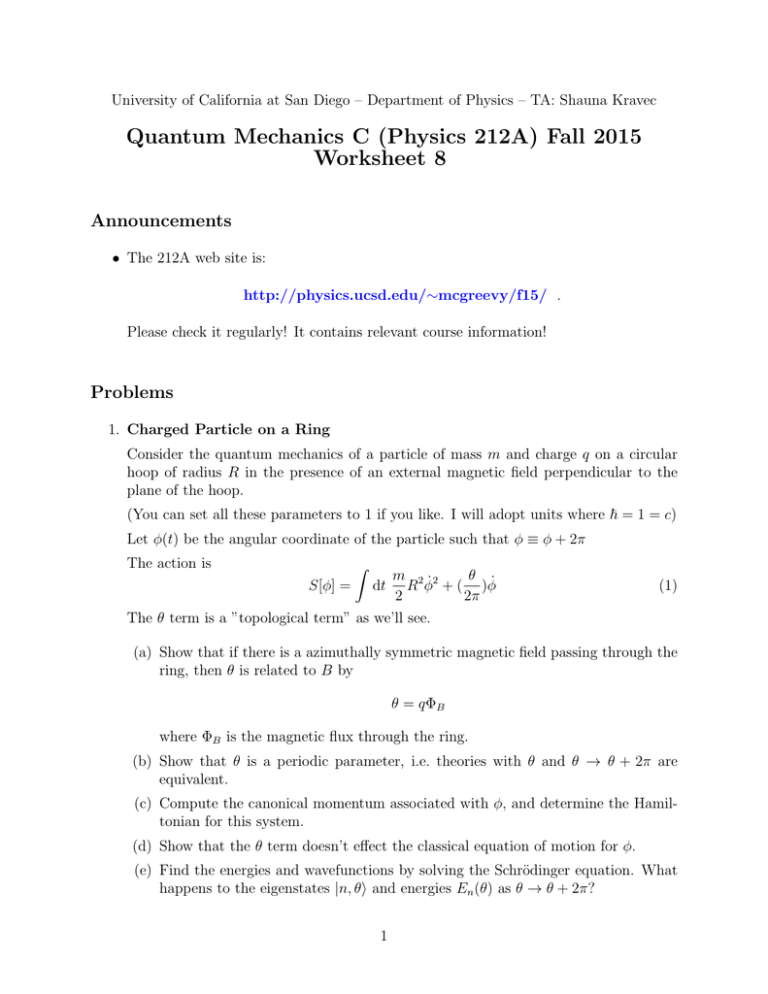
University of California at San Diego – Department of Physics – TA: Shauna Kravec Quantum Mechanics C (Physics 212A) Fall 2015 Worksheet 8 Announcements • The 212A web site is: http://physics.ucsd.edu/∼mcgreevy/f15/ . Please check it regularly! It contains relevant course information! Problems 1. Charged Particle on a Ring Consider the quantum mechanics of a particle of mass m and charge q on a circular hoop of radius R in the presence of an external magnetic field perpendicular to the plane of the hoop. (You can set all these parameters to 1 if you like. I will adopt units where ~ = 1 = c) Let φ(t) be the angular coordinate of the particle such that φ ≡ φ + 2π The action is Z θ m 2 2 R φ̇ + ( )φ̇ 2 2π The θ term is a ”topological term” as we’ll see. S[φ] = dt (1) (a) Show that if there is a azimuthally symmetric magnetic field passing through the ring, then θ is related to B by θ = qΦB where ΦB is the magnetic flux through the ring. (b) Show that θ is a periodic parameter, i.e. theories with θ and θ → θ + 2π are equivalent. (c) Compute the canonical momentum associated with φ, and determine the Hamiltonian for this system. (d) Show that the θ term doesn’t effect the classical equation of motion for φ. (e) Find the energies and wavefunctions by solving the Schrödinger equation. What happens to the eigenstates |n, θi and energies En (θ) as θ → θ + 2π? 1 (f) Suppose I do a gauge transformation A → A + ∇Λ that ”removes” the presence of the magnetic field. What Λ accomplishes this? Why does the spectrum not change? (g) Show that for θ 2π = 2m+1 2 for m ∈ Z the spectrum is two-fold degenerate ~ = (Ex cos φ, Ey sin φ, 0) Now suppose I turn on an electric field in the xy-plane. E (h) Write the Hamiltonian for the system in the presence of this field θ (i) Consider 2π = 21 + δ for δ 1 so that |0i and |1i are nearly degenerate. Write an effective Hamiltonian for this 2-state system, including the electric field. (j) Calculate the ’precession’ frequency of the particle in this field keeping with the 2-state system idea. (k) Now suppose Ey = Ex = E cos ωt varies in time. Suppose at t = 0 the particle is in state |0i. What’s the probability of the particle to be in |1i at a later time T ? Show this probability is periodic and find the period T0 . What’s a physical constraint on ω for this picture to be valid? 2
